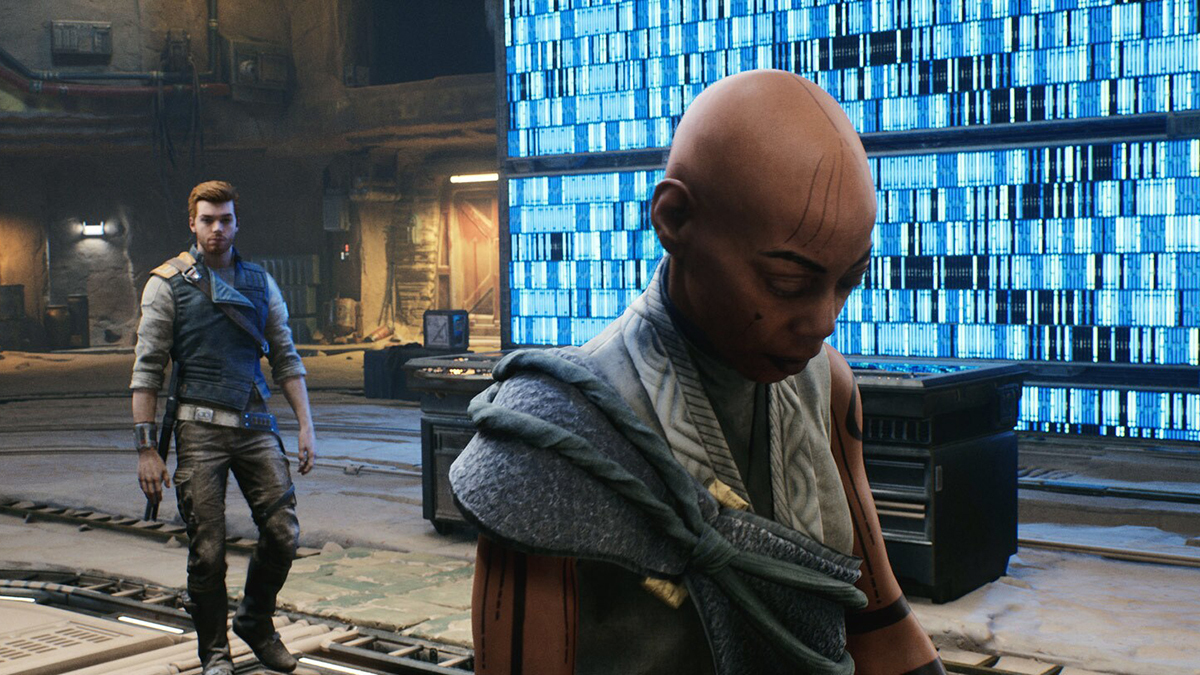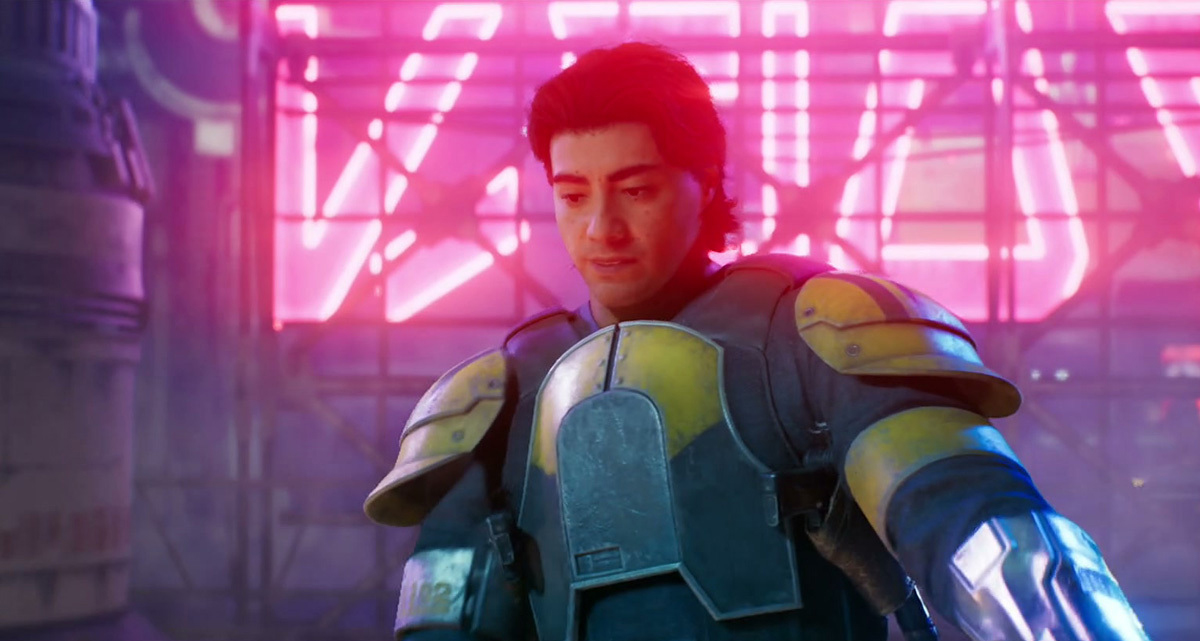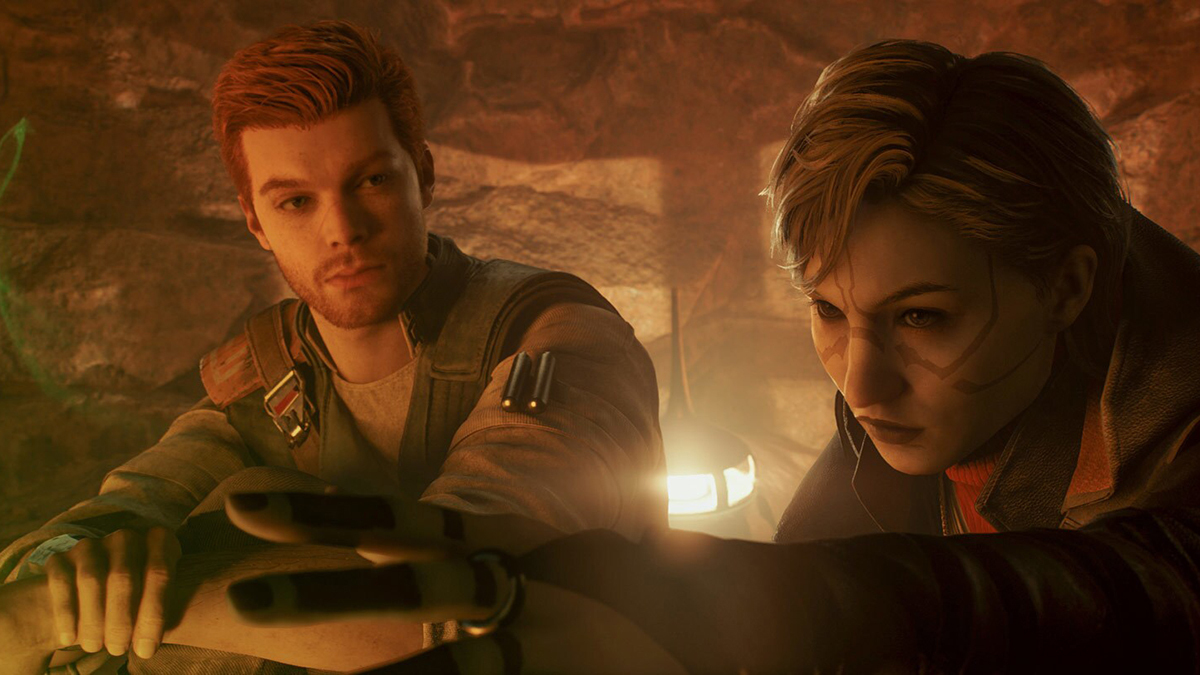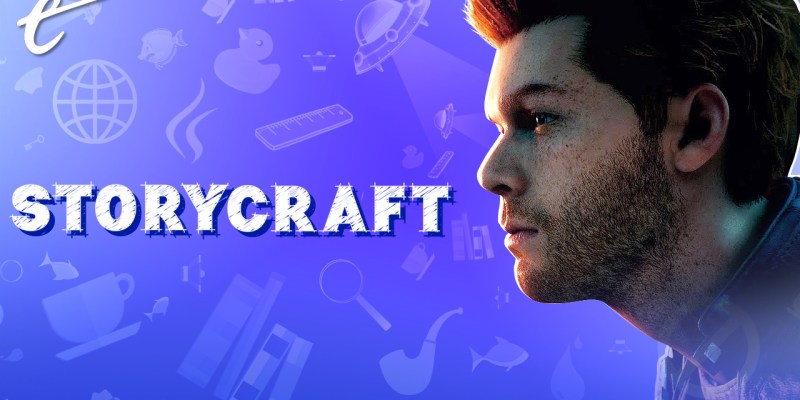This article contains spoilers for Star Wars Jedi: Survivor in its discussion of living with trauma.
Star Wars: Jedi: Fallen Order is one of the bleakest Star Wars stories in the Disney era. Young Jedi Cal Kestis is only 18 years old, living in hiding as an indentured scrapper on a junkyard planet. He suffered an immeasurable trauma at 13, and although Fallen Order is sometimes a rollicking adventure story, it’s also about a young man haunted by horrific loss. His final decision at the end of the story, to spare other kids like him the same horror, is much more mature and complex than Star Wars usually allows. There’s no big explosion, no medal ceremony, at the end of Fallen Order, just a small found family standing over the shattered remains of a holocron, wondering if they made the right decision.
Five years later, Star Wars Jedi: Survivor gives no clear answer. Cal seems to have lost his way. Though now a capable and confident warrior, he puts himself at considerable risk conducting high-risk strikes on Imperial targets for Saw Gerrera, the man who, by the time of Rogue One, is considered too extreme for the Rebel Alliance. It’s interesting that Saw never actually appears in Jedi: Survivor, but his shadow looms large. The game doesn’t spell it out, but when Cal’s found family disintegrated, it’s clear that Saw stepped in to take advantage of Cal’s skills — and his rage.
When Cal’s mission to Coruscant goes horribly awry, his team killed or scattered and his ship neatly destroyed, Cal flees to the one person he knows will accept him no matter how far he’s fallen: Greez.
I loved Greez in Fallen Order. You’re supposed to love him. Played with effortless charisma by veteran character actor Daniel Roebuck, Greez is the dad of the story. In Jedi: Survivor, Greez is in full-on divorced dad mode: He’s sunk all his cash into a crappy bar in a crappy town and is content to drown his sorrow there.

The in-game encyclopedia entry says the only thing Greez wants is a family. He’s rendered completely inert by a lack of one, but even alone, he can’t help but create space for a family that may never come. In running Pyloon’s Saloon, Greez is trying to gain some control over his life. But Greez doesn’t need control; he needs a family, and even as Cal fills Pyloon with life, Greez doesn’t hesitate to leave it all behind and pilot the Mantis again. As long as he gets to cook for his family, Greez is happy. He learns that a family’s presence might be fleeting, but love doesn’t have to be — and home is where you make it.
Cal’s other mentor is Cere Junda, the Jedi Master who cut herself off from the Force. In Fallen Order, Cere learns to accept her failure. Jedi: Survivor is about her protecting others from making the same mistakes she did.
Cere seems to have left the warrior side of her Jedi skills behind. Wearing modest robes, a shaved head, and ritualistic tattoos, Cere has transformed into a mentor for many, not just for Cal. Star Wars Jedi: Survivor is set roughly the same time as the Obi-Wan Kenobi TV show and borrows one of its better ideas: a galactic underground railroad for victims of Imperial tyranny. Cere is searching for other Jedi but accepts that her role is expanded to be a mother for all those seeking a better life away from the Empire.
When the Empire invades her Archive, the player takes control of Cere, and you get to see how powerful a Jedi Master really is. I always hated how the prequels handled Yoda and Mace Windu. These supposed ultra-Jedi didn’t seem much more powerful than anyone else. Cere absolutely tears through the invading Imperial forces. The only thing that slows her down is Darth Vader.
In Fallen Order, we learn that Vader broke Cere, leading her to betray her Padawan and a small group of Jedi younglings to the Empire. When she found out, Cere turned to the Dark Side. Cere is faced with a similar situation in Jedi: Survivor, but this time she fights, going toe to toe with Vader in the game’s hardest mainline boss fight. Cere’s sacrifice allows many others to survive.

Sharp-eared gamers will figure out Bode Akuna will be a major character pretty quickly: He’s voiced by Noshir Dalal, who played Charles in Red Dead Redemption 2. Dalal doesn’t just have a super cool action-hero voice; he brings a lot of vulnerability to his characters. Akuna constantly talks about how his daughter is the reason he’s running around the galaxy strapped to a jetpack. Initially, I figured we were in for a lame “twist”: Bode’s daughter is actually dead, and he’s doing all this for revenge. I was partially right, and the real twist plays into Survivor’s theme of long-term trauma.
Bode was secretly a Jedi all along. He worked for Republic Intelligence during the Clone Wars, learning how to hide his Jedi skills to infiltrate, exploit, and disrupt Separatist forces. After the Purge, he used his skills to go into hiding, where he eventually fell in love and had a daughter. When the Inquisition found and killed his wife, he made a deal with his old Republic Intelligence boss, now a director in the Imperial Security Bureau: The Empire would spare his daughter if he helped root out other Jedi in hiding.
If the main cast of Jedi: Survivor is learning to live with trauma, Bode has succumbed to it. He uses his daughter as an excuse for everything he does, even the mass murder of refugees. At the end of the game, Bode is given multiple opportunities to surrender; even his daughter begs him to stop. He does what he’s spent the whole game doing: using his trauma as a shield and a weapon. Ultimately, it kills him.
As an aside, Star Wars Jedi: Survivor has another antagonist, the fallen Jedi Dagan Gera. Gera is certainly a victim of trauma, but his inclusion in the story feels more like an excuse to bring the High Republic era out of the novels and into the mainstream Star Wars canon. His story is ultimately not as interesting as Bode’s.

On the whole, Jedi: Survivor takes what worked about Jedi: Fallen Order and improves on every aspect. The world is bigger and more detailed, the combat is tighter and more varied, the story is richer, and the characters are more complex. Fallen Order‘s examination of how trauma affects us all, young and old, trained and untrained, was more mature than Star Wars usually allows, but it was a common Hollywood version of trauma with a facile solution: Even if bad things happen to you, grit, determination, and heroics will see you through to the other side. Trauma as a story driver is way overused, and I was worried Jedi: Survivor would fall into the same trap as other stories that use it as an anchor.
Jedi: Survivor presents a much more realistic portrayal of trauma. The writers know that true trauma, the kind of horrific events like the ones experienced by Cal, Greez, Cere, and Bode, don’t ever truly leave you. You carry them with you, like stowaways on a spaceship, where they can sabotage your journey, or you can acknowledge them, bring them into the light of your family, and blunt their power.
When Cal gets in over his head at the beginning of the story, he quickly works to get his crew, his family, back together. The Jedi series isn’t about saving the galaxy. Both games are about protecting a small group of people, hiding them from an enemy too powerful for one young Jedi and his friends to take on alone. At the end of Survivor, Cal seems to have found his safe place, but it cost him dearly to find it.
About three-quarters of the way through the story, Cal reaches his breaking point and taps into the Dark Side. This is a plot-driven moment, but it isn’t a one-off: It replaces the Slow ability and functions exactly like God of War‘s “Rage” mode. By this point in the story, Cal’s Jedi mentors are dead, and the only person who sees him use it is Merren, the Dathomirian witch. Merren doesn’t have the same issue with using the darkness as his former Jedi Masters did, and she doesn’t caution Cal against using it. Loving someone with trauma sometimes means accepting the scars they bear because of it, but Merren’s indulgence of Cal’s anger could destroy them both.
Star Wars loves a trilogy. It’s clear that Jedi: Part 3 will tackle Cal’s dip into the Dark Side head-on, likely with his new apprentice, Bode’s daughter Kata, along for the ride. Will Cal fall, and will we play as Kata to take him down? It would be a brutal, depressing end for one of modern Star Wars‘ most interesting characters, but trauma is a beast. If you feed it, it grows.
